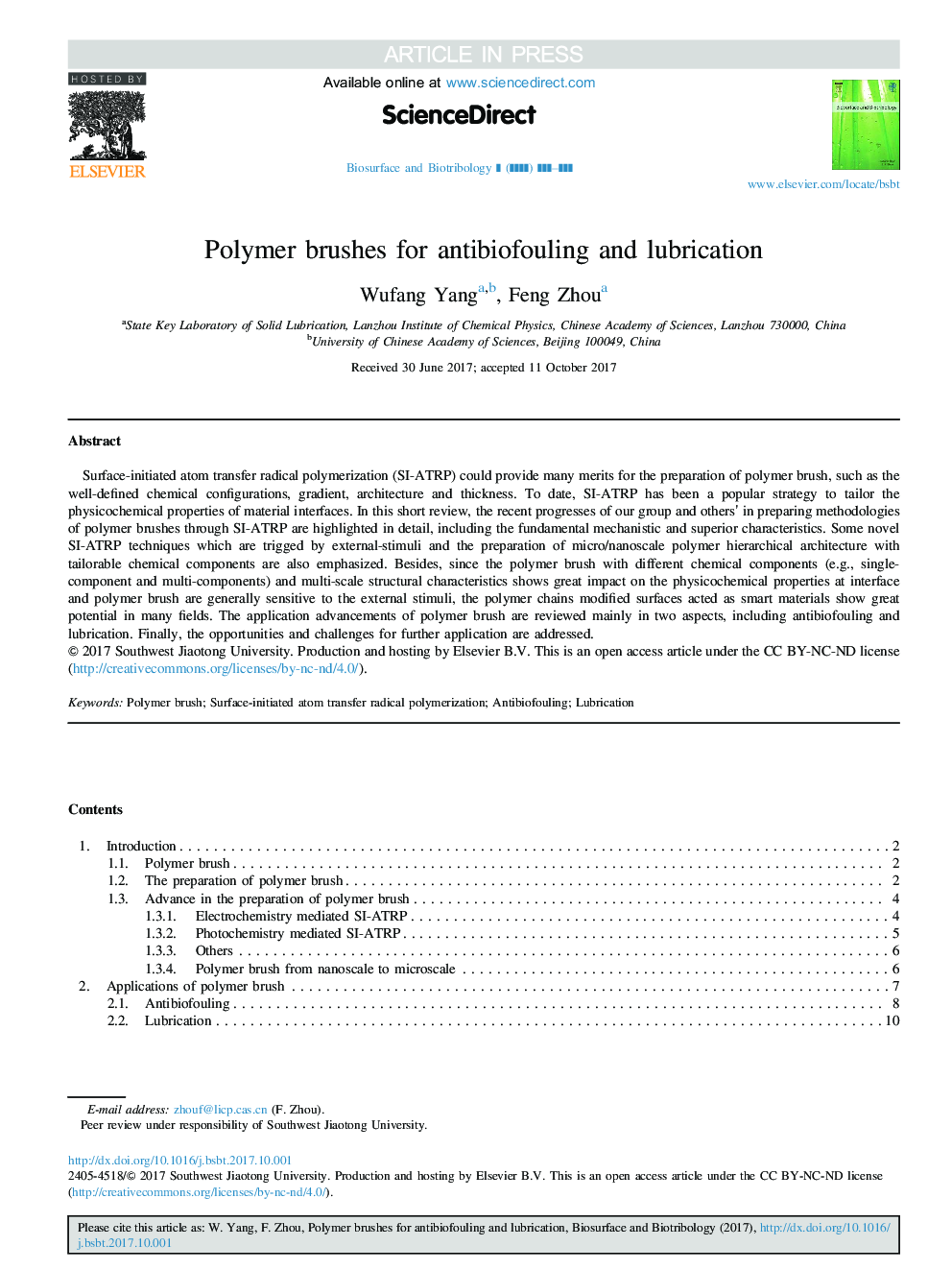| Article ID | Journal | Published Year | Pages | File Type |
|---|---|---|---|---|
| 7153083 | Biosurface and Biotribology | 2017 | 18 Pages |
Abstract
Surface-initiated atom transfer radical polymerization (SI-ATRP) could provide many merits for the preparation of polymer brush, such as the well-defined chemical configurations, gradient, architecture and thickness. To date, SI-ATRP has been a popular strategy to tailor the physicochemical properties of material interfaces. In this short review, the recent progresses of our group and others' in preparing methodologies of polymer brushes through SI-ATRP are highlighted in detail, including the fundamental mechanistic and superior characteristics. Some novel SI-ATRP techniques which are trigged by external-stimuli and the preparation of micro/nanoscale polymer hierarchical architecture with tailorable chemical components are also emphasized. Besides, since the polymer brush with different chemical components (e.g., single-component and multi-components) and multi-scale structural characteristics shows great impact on the physicochemical properties at interface and polymer brush are generally sensitive to the external stimuli, the polymer chains modified surfaces acted as smart materials show great potential in many fields. The application advancements of polymer brush are reviewed mainly in two aspects, including antibiofouling and lubrication. Finally, the opportunities and challenges for further application are addressed.
Keywords
Related Topics
Physical Sciences and Engineering
Engineering
Mechanical Engineering
Authors
Wufang Yang, Feng Zhou,
